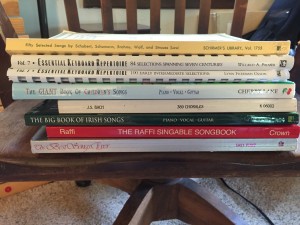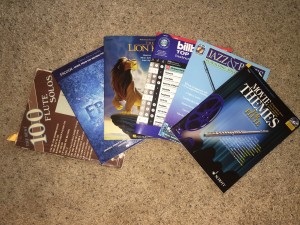Practice Session, part 5: Improvisation
- Marlene
- Blog, flute, Uncategorized
- 1 Comment
Practice Session, part 5: Improvisation
Improvisation: Beyond the Lesson Materials.
The fifth part of a practice session should include music that you love.
If you’re just starting this blog series, be sure to read the OVERVIEW and posts about the four other sections. The links are below.
- Warm up.
- Scales & Technique.
- Etudes.
- Repertoire.
- Improvisation and revisiting old material.
- Review, warm-down, reflecting on goals and planning for the next practice session.
The fifth part of a well-organized practice time will help you to reconnect to your inner musician and begin to wrap up the practice session. If we are considering a 30 minute practice interval, the fifth part will include minutes 25-28.
If you’re not a jazz musician, you may feel reluctant to add improvisation to your practice, but I assure you that it’s just as important as scales and etudes.
Improvisation here is defined broadly. I’m using the term to mean any music that you play away from the page or which reconnects you to your love of music. You can literally “improvise” what you want to do for these three minutes.
Improvisation in this broad sense may include
- made up songs
- figuring out songs you know
- sight reading
- playing “non-classical” music
- returning to pieces you have passed but make you happy
One of my favorite made up songs is the “How I Feel Today Song.” For this exercise, simply ask yourself how you feel in this moment. Perhaps you’re tired and annoyed. Or maybe you’re feeling joyful and busy. Direct those feelings into you fingertips. Choose a key (or not) and let your fingers move in any way they wish. You may be surprised by what you hear. I’ll give more ideas about improvising in a future blog post, but here are a few more suggestions:
- Without using music, figure out a favorite song– this could be a simple folk song like “Twinkle Twinkle” or a song you hear on the radio like “Let It Go.”
- Begin playing from sheet music but after a couple of measures, continue by making up your own music in the same style and key.
- Play along with a favorite recording, not necessarily with the melody. Pretend you are a backup singer or someone in the band.
This part of the practice session is also where you will want to include some sight reading. Everyone benefits from sight reading practice, though “practicing sigh reading” sounds like an oxymoron. Adult students seem to get the most benefit out of regular sight reading practice. Here’s some of the music in my husband’s sight reading stack today:
These three minutes of practice, offers the opportunity to play music that you might not work on in a lesson. Many of my flute students enjoy playing pop songs, tunes from musicals, church music, or folk music from all around the world. Many collections of pop music will include a play-along CD and these can be lots of fun. Although this fun music should not compromise the time you spend on repertoire for your lesson, it is important to always play something you enjoy. These are some fun books I have in my collection:
This fifth “drawer” of the practice cabinet will also include pieces you have played in the past and love. This could be ensemble music that makes you happy or repertoire music that you enjoy. You won’t play these pieces for your weekly lesson because you have moved past this music, but in this section of your practice, it doesn’t matter. It can be gratifying to return to music you played in the past and realize that now you have better mastery of them.
Be sure to reconnect with music that makes you happy every day. Awaken the creative spark inside by getting off the printed sheet music. Remind yourself of the progress that you have made when you are revisiting old pieces. The fifth part of your practice session is the perfect place to improvise with the music you play.
When your time is up, continue to the sixth and final “drawer” REVIEW.


1 comment